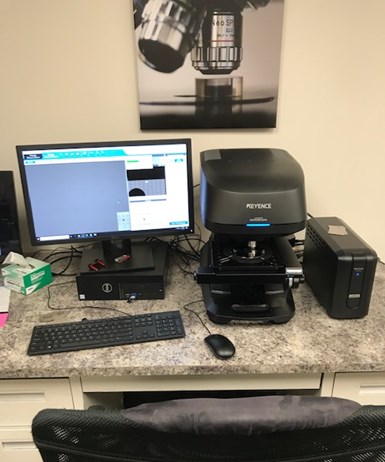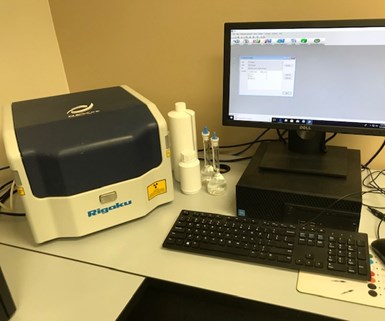Coventya Invests in R&D Instrumentation
Sensitive, new technologies help company optimize customer applications.
Coventya added technical, analytical research and development instrumentation to further optimize customer applications. Some of the instrumentation includes a Keyence VK-X1000 Series 3D laser scanning confocal microscope, Rigaku NEX DE EDXRF spectrometer and Olympus SZX7 stereo microscope.

Keyence VK-X1000
According to the company, the laser microscope is designed to obtain noncontact profile, roughness and even thin film thickness measurements with resolution down to a nanometer range. This instrumentation can examine surface defects on a microscopic scale, while measuring depth, width and frequency of anomalies in coating surfaces.
The benchtop Energy Dispersive X-ray Fluorescence Spectrometer provides a sensitive, nondestructive option for elemental characterizations and analyses of coatings and materials without requiring to pump down under vacuum. Elemental analysis can include sodium through uranium, in matrices such as solids and alloys, liquids, powders and more.

Benchtop energy dispersive X-ray fluorescence spectrometer
The company says that the stereo microscope —coupled with a 5MP camera — allows for detailed lower magnification inspections, documentation and illumination of defects and items of interest on almost any sample or coating surface. Covenyta’s research team will use this to evaluate and illustrate the appearance of surfaces of interest prior to subjection to indepth analyses.
Related Content
-
Anodizing for Bonding Applications in Aerospace
Anodizing for pre-prep bonding bridges the gap between metallic and composite worlds, as it provides a superior surface in many applications on aluminum components for bonding to these composites.
-
Finishing Systems Provider Celebrates 150 Years, Looks to Future
From humble beginnings as an Indiana-based tin shop, Koch Finishing Systems has evolved into one of the most trusted finishing equipment providers in the industry.
-
Bryan Leiker, MFACA, Discusses CARB Public Hearing Over Calif. Hex Chrome Ban
Bryan Leiker, executive director, Metal Finishing Association of California, offers a recap of a January 27, 2023, public hearing conducted by the California Air Resources Board prior to an impending ruling on a proposed ban of hexavalent chromium use for finishing operations in the state.












